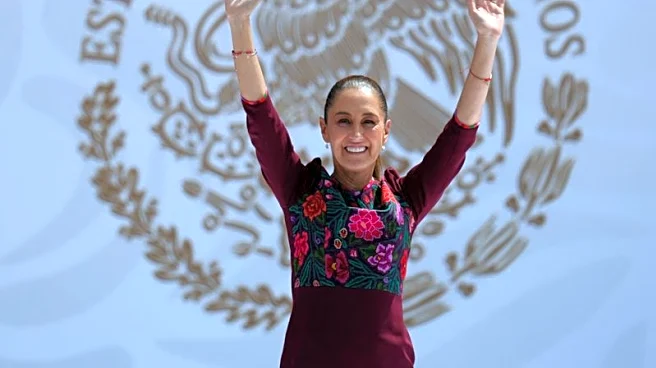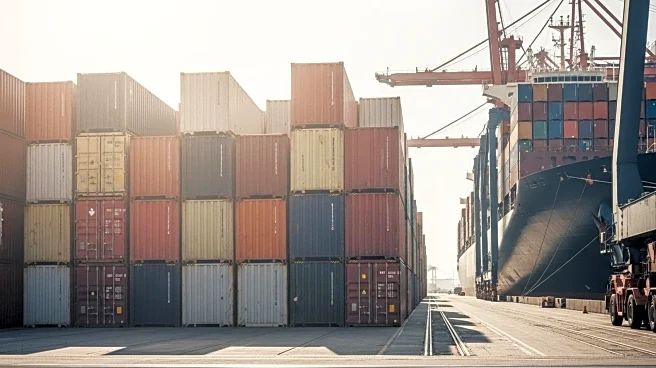What is the story about?
What's Happening?
American Eagle Outfitters is taking significant steps to mitigate the impact of U.S. tariffs, aiming to reduce these costs by over 60% by early 2026. The company has outlined a strategy that includes price adjustments, cost negotiations with suppliers, and optimizing transportation methods between air and ocean freight. Additionally, American Eagle is shifting its sourcing away from countries with higher U.S. tariffs, such as China and Vietnam, to minimize expenses. The company projects that it will incur $70 million in tariff costs during the latter half of the current fiscal year, ending in January 2026, a reduction from an estimated $180 million without these mitigation efforts. Looking ahead, unmitigated tariff costs for the next fiscal year are expected to range between $125 million and $150 million.
Why It's Important?
This strategic move by American Eagle is crucial as it addresses the broader challenges faced by the retail and apparel industry due to increased tariffs from the Trump administration. By reducing dependency on high-tariff countries and optimizing supply chain logistics, American Eagle aims to maintain competitive pricing and protect its profit margins. This approach not only benefits the company but also sets a precedent for other retailers grappling with similar trade challenges. The reduction in tariff costs can lead to more stable pricing for consumers and potentially enhance the company's market position.
What's Next?
American Eagle plans to continue its efforts to diversify its manufacturing base, reducing reliance on China and Vietnam. The company is also in the midst of a long-term supply chain optimization plan, which is part of a broader three-year growth strategy announced in March 2024. This plan includes further adjustments to its sourcing and logistics operations to ensure cost-effectiveness and resilience against future trade disruptions. Stakeholders, including investors and industry analysts, will likely monitor these developments closely to assess their impact on the company's financial performance and market strategy.
AI Generated Content
Do you find this article useful?














